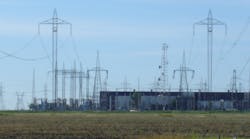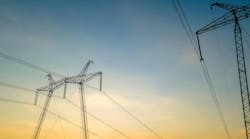Manitoba Hydro has selected the supplier for the largest contract associated with the Bipole III Reliability Project. The consortium of Siemens Canada and Mortenson Canada was chosen to design, supply, and install the High Voltage Direct Current (HVDC) equipment and buildings required for the project's two converter stations. Contract signing is expected to take place in early October, with the value of the contract at approximately $800 million (CDN).
With the majority of contract costs now committed, the control budget for the Bipole III Project is $4.6 billion, up from the preliminary estimate of $3.3 billion done in 2011.
"As we started work on Bipole III, the competitive tenders for major components came in higher than previous estimates," said Scott Thomson, President and CEO of Manitoba Hydro. "I directed our team to conduct a full review of the 2011 estimate relying on the new tools used to develop budgets for Keeyask and other major projects The $4.6 billion control budget is the result."
Manitoba Hydro is confident that the new control budget is firm and has measures in place to ensure that the project remains on track. The new project costing process, recognized by independent experts at the recent NFAT hearings as being much improved over Manitoba Hydro's previous processes, is part of the utility's efforts to effectively manage its major capital projects. Manitoba Hydro has also re-structured its executive team to include a new Vice-President of Major Capital Projects, with a stronger focus on project management.
A number of factors contributed to the increase over the 2011 estimate, which was prepared in the early planning stages prior to environmental reviews, final route selection and key technical decisions. The most significant cost driver was the direct current converter technology adopted. All the vendors bid traditional Line Commutated Converter (LCC) technology which requires the use of synchronous condensers. As a result, converters and related equipment costs came in approximately 55 per cent higher than the 2011 estimate, which assumed advanced Voltage Source Converter (VSC) technology.
Other drivers included an increase in the carrying capacity of the line by 15 per cent over the original design for a relatively modest additional cost, additional towers due to route adjustments arising out Clean Environment Commission hearings, and camp improvements to help attract and retain workers in a competitive labour market.
Bipole III continues to be the best option for enhancing the reliability of Manitoba Hydro's transmission system. The additional capacity accommodates increased future export sales that help to pay for important system upgrades and moderate domestic rates. The project also offers significant employment, training and other economic benefits, including 8,782 person-years of employment, $482 million in labour income, $688 million in gross domestic product, and $352 million in tax revenue.
Transmission reliability is essential to enable the development of hydroelectricity in Manitoba which offers significant environmental benefits and cost certainty when compared to all other sources of power generation, including natural gas which the Public Utilities Board has said is subject to price volatility.
"Bipole III remains essential to enhance the long-term reliability of Manitoba Hydro's power grid, and provides the additional capacity required to bring electricity from new hydro projects in the north to southern Manitoba. Our customers want enhanced reliability, and Bipole III is a key component in meeting that need," said Thomson.
Currently, over 70 per cent of all electricity generated by Manitoba Hydro travels south over two, side-by-side transmission lines, Bipoles I and II, through Manitoba's Interlake region. Being in such close proximity to each other makes the lines susceptible to being impacted by a single weather incident or forest fire event, as happened in September 1996. Bipole III and the associated converters stations provide an alternate path for electricity to reach customers should such an event re-occur.


